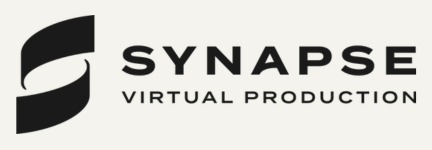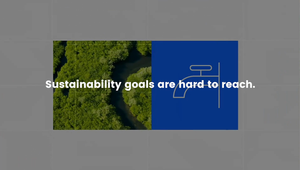
Advertising Week New York ‘23: Seven Brands We Need to Talk About

Andy Sexton is executive creative director and partner at 2LK. Driven by his absolute passion for effective design, Andy oversees 2LK’s intelligent, insight-led approach to creativity. He directs high-level brand experiences for clients such as Intel, Canon, Cannes Lions, Salesforce, TikTok, HSBC and Oracle. His dedicated leadership of the Intel account and 18 years’ MWC experience have generated industry recognition, awards and internal pride. Andy’s creative vision is pivotal to 2LK’s continued success, shaping the award-winning work. Andy is regularly invited to write articles, speak at events and judge awards programmes worldwide.
Kate Fulford-Brown is head of client and commercial. Leading 2LK’s client services and commercial function, Kate has responsibility for creating the best possible experience and commercial outcomes for our clients and the agency. She brings 25 years’ B2B brand and advertising experience, leading global cross-functional teams at McCann, Saatchi & Saatchi and Futurebrand, for clients like MasterCard, Procter & Gamble, RBS and Nestle. Since joining 2LK in 2022 Kate has been fundamental in the development of pivotal client accounts such as Ascential and Salesforce.
Four days of content, 12,000+ industry peers, over 400 sessions and some of the world’s biggest brands. AWNY brings together the brightest minds in marketing, advertising, media and tech - with a tasty sprinkling of culture, entertainment and surprise.
So, how’s our industry leveraging the power of experience to tell stories, inspire change and create advantage?
Which brands created The Experience Advantage® (and which didn’t?)
1. Canva: The smallest, busiest activation in town.

Friendly, fun and focussed. This story-driven pop-up encouraged us to ‘get the creative juices flowing’ using the Canva platform to design and print your own smoothie label.
Simple, brand-led and rich attention to detail created a standout magnetic destination with extended impact from clever and thoughtful digital OOH.
2. SiriusXM: Serious about audio.

Magnetic, telegraphic and persuasive - SiriusXM owned the audio conversation delivering an insightful stream of content that illuminated the entire venue with compelling data on the breadth, scale and ubiquity of our listening habits.
Extending the reach and equity of the experience with a live podcast studio and a keynote featuring their famous podcasting talent.
3. Netflix: House of brands.

The Netflix effect: “The ability for a story to go beyond viewing and create a cultural phenomenon.”
Hanging off this one single idea, was a suite of title-branded immersive vignettes - from record stores, to arcades, sports bars and costume stores - all carefully curated to demonstrate the depth, breadth and power of their content omniverse.
4. TikTok: Exponential entertainment.

“One day you’re filming yourself on the Tube, the next day everybody else is, too.”
Big, bright, branded and shamelessly fun - the focus was all on educating attendees to be better creators. Deeply engaging for users, but perhaps lacking in depth for the ardent adtech attendee searching for useful audience data on reach and resonance.
5. Shutterstock: Ideas to life.

Simple wins - this gallery-esque experience created a personalised stream of content for every attendee, learning about you, your interests and preferences to curate a unique cinematic flow of images and assets.
Telling a singular story, and telling it well, this elevated space (with its considered content approach) stood up and stood out.
6. Google: Pit stop (flop).

Big budget, big theme, big crowd-puller and a clear stance on AI.
F1 continues to create interesting brand marketing partnerships, leaning into the cultural gravity of the sport. This super-slick experience lured people in, but ultimately failed to communicate anything relevant to the adtech community. A classic tale of form over function, complexity killed this story and the experience suffered.
7. Amazon ads: Vacuous village.

The standout failure of AWNY. Big, bland and boring. No story, no fun, no spirit and no point.
A good idea, poorly executed. Directing the conversation around small business reticence to engage with the Amazon goliath, however, this was disjointed and lacking in audience and brand connection.















